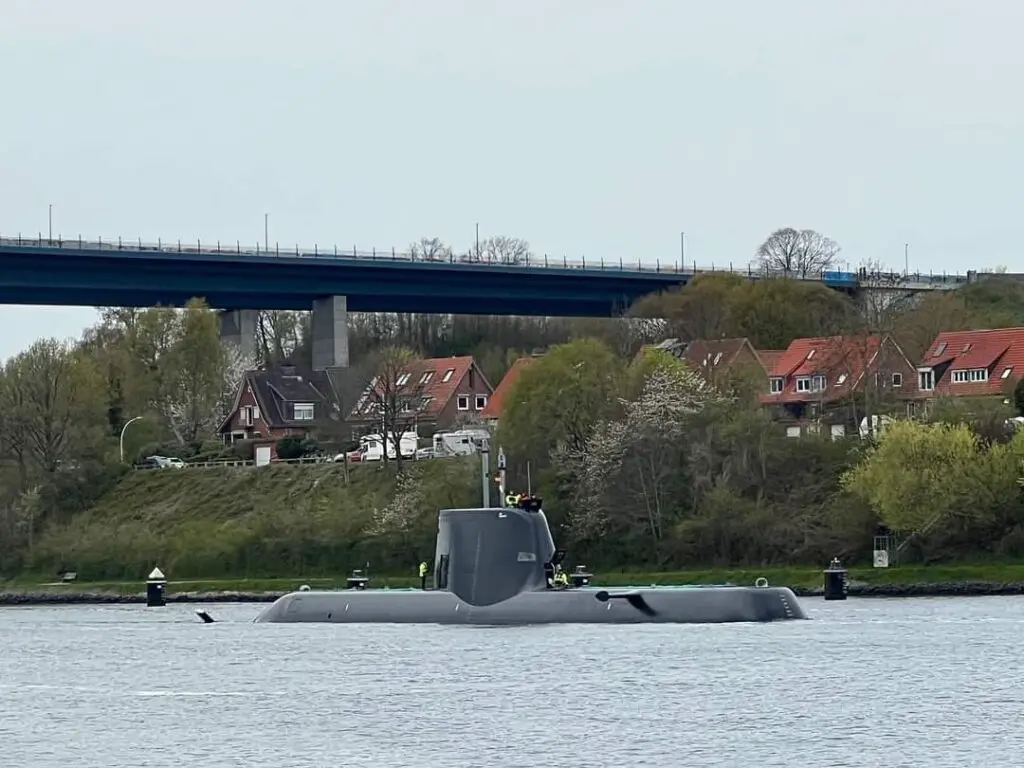An official ceremony was performed at Changi, the principal naval base of Singapore, on July 20, 2023, to commemorate the inclusion of the first large non-nuclear submarine of German construction under Project 218SG, Impeccable. This submarine was one of the four ordered as part of the contract. Rear-Admiral Shawn Wong, the current Commander of the Republic of Singapore Navy, was present at the ceremony.
It is essential to point out that the Impeccable is, in fact, the second submarine of this project that has been built for Singapore. The first one, Invincible, had already completed factory sea trials in Kiel on August 31, 2020, but it stayed in Germany for crew training for all four submarines that Singapore had bought.
In December 2013, the Ministry of Defence of Singapore inked the initial contract with the German shipbuilding company ThyssenKrupp Marine Systems (TKMS) to build two non-nuclear submarines suited explicitly to Singapore’s specifications as part of the newly established Project 218SG. These submarines would not have nuclear power. In May 2017, the Republic of Singapore Navy added two more subs to its order with TKMS, which led to the signing of an extra contract for their construction. Unofficial sources in Germany anticipated that the entire cost would be somewhere in the neighbourhood of 3.2 billion euros, as the specific contract numbers still needed to be made public.
The Kieler Werft (previously known as Howaldtswerke-Deutsche Werft – HDW), which is currently a part of TKMS and is located in Kiel, is the facility that is responsible for the building of these submarines for Singapore. 2014 saw the beginning of construction on the first two submarines. The lead ship of the project, Invincible, was launched in Kiel on February 18, 2019, while the second submarine, Impeccable, which finally became the first to join the Singaporean Navy, was launched on December 13, 2022.
The second submarine, named Impeccable, was put onto the transport vessel Rolldock Storm on May 18, 2023, after the completion of the testing. The ship set sail from Kiel on June 1 and arrived in Singapore on July 7. On July 8, the submarine was transferred from the cargo vessel to its intended location. It is anticipated that the full commissioning of the Impeccable into the operational fleet of the Republic of Singapore Navy will be finished by the time the current year ends.
On January 12, 2018, construction on the third and fourth submarines, which will be called Illustrious and Inimitable, respectively, began at Kiel. The subs are expected to begin to be delivered in 2024. On December 13, 2022, the launch of the Illustrious took place concurrently with the launch of the Impeccable, the second submarine.

Submarines belonging to Project 218SG are an enlarged version of the well-known German export submarine Project 214. The Project 218SG submarine has a full displacement of 2,000 tonnes when operating at the surface, while its full displacement when submerged is 2,200 tonnes. Compared to Project 214, which has a full surface displacement of 1,690 tonnes, a length of 65 metres, and a width of 6.3 metres, the length of this submarine is 70 metres, and its width is 6.3 metres. The design of Project 218SG borrows components from an earlier one of Germany’s modern projects called Project 212A. One of these components is the stern control surface in the shape of an X. The submarine has ten torpedo tubes measuring 533 millimetres and two measuring 650 millimetres for special weaponry and equipment. It uses the same air-independent propulsion system as the Project 214 submarines, which means that two HDW/Siemens electrochemical generators power it, each with a power output of 120 kW. The sophisticated Combat Management System (CMS) used by the Project 218SG submarines was co-created by the German company Atlas Elektronik and Singapore Technologies Electronics. This CMS was installed on the submarines as standard equipment. There are only 28 personnel on board as part of the crew.
These new Project 218SG submarines are intended to replace the two Challenger-class submarines (Sjoormen) of Swedish Project A 12, which were acquired in the late 1960s. Two of these submarines were already decommissioned in March 2015. They are also intended to replace the two Archer-class submarines (Vastergotland) of Swedish Project A 17, which were added to the Singaporean fleet in 2011-2012 after being equipped with air-independent propulsion systems based on Stirling engines in Sweden.
In an environment where the navies of Asia-Pacific nations are aggressively developing their submarine fleets, the Singaporean military views the renewal of its submarine fleet as essential. Admiral Lai Chun Hang, the former chief of the Singaporean Navy, told Bloomberg in May 2017 that by 2030, up to 250 submarines from various nations will operate in the shallow waters of Asia, in addition to surface ships. In his opinion, this circumstance is replete with underwater incidents. He had requested that the ‘code of conduct for unscheduled encounters at sea,’ signed by many Asia-Pacific nations, including China, Russia, and the United States, be extended to cover the actions of submarines.
The Bangkok Post noted that it would be difficult to acquire the consent of the countries that have signed the code to provide other countries with information on the location of submarines, as required by the code.
